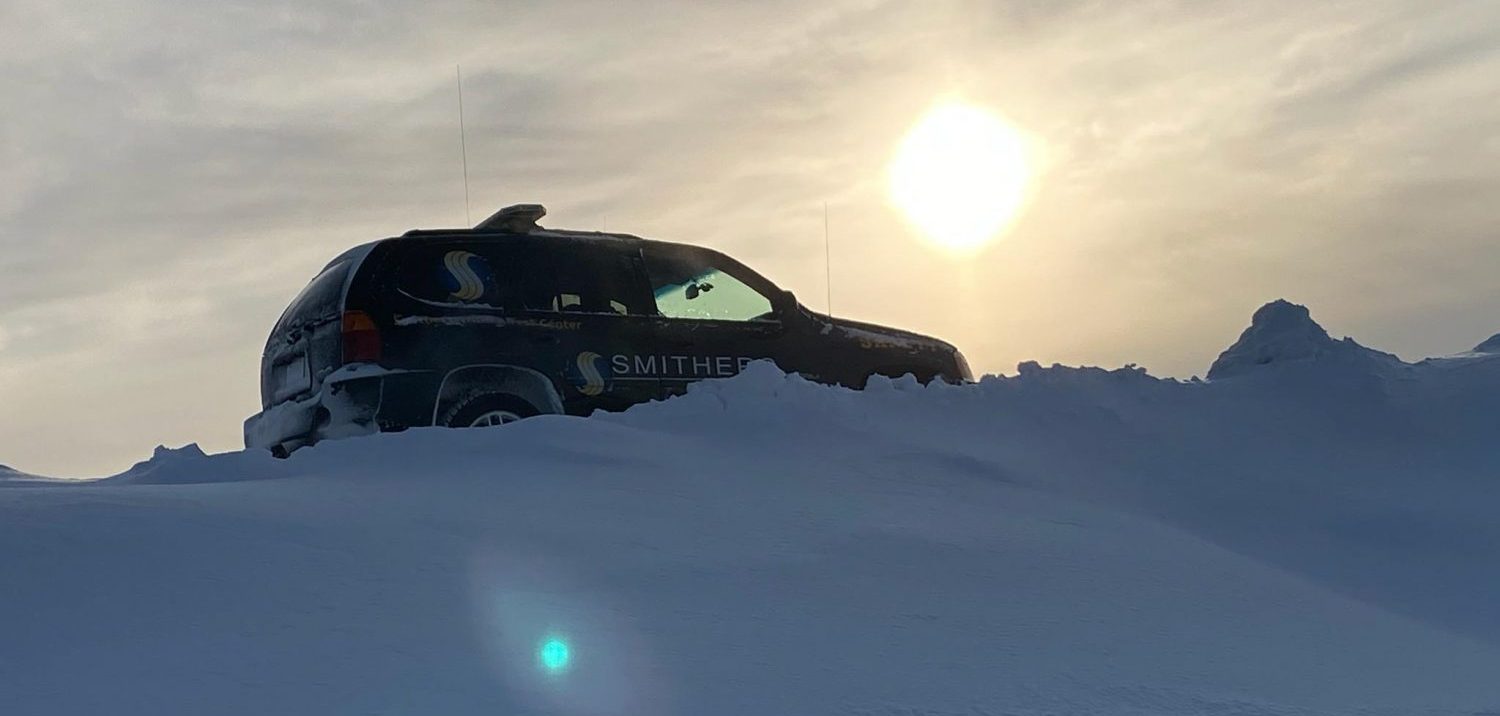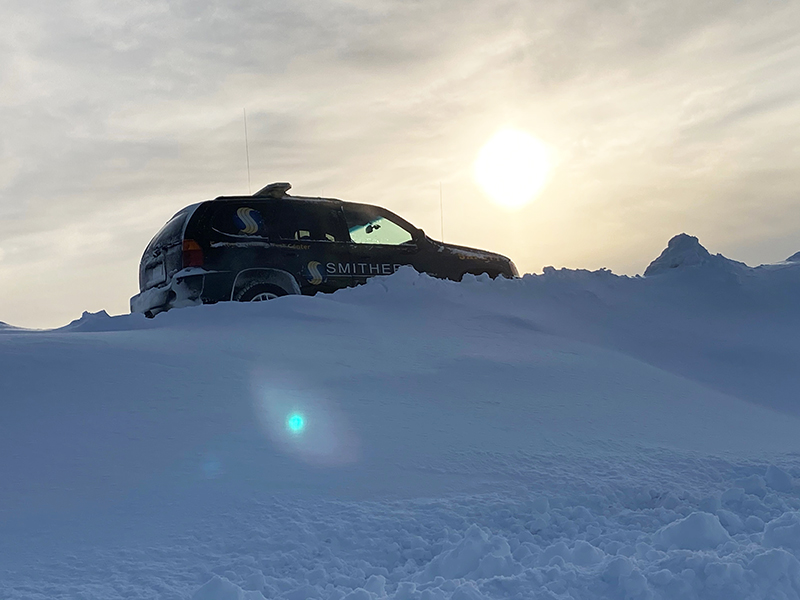I always lean towards a narrower winter tire for more pounds per square inch on the ice/slush/snow to cut through or grip better. Same/similar overall diameter but go up a series like 265/70 to 245/75 or 235/80 in a light truck tire.
If you want the most pressure per square inch, then you should run the largest narrowest rim size available, with the narrowest, lowest profile tire available for that size, with the most sidewall rigidity you can get (XL runflats) at 50PSI.
70-80 series tires produce nice square shaped contact patches and need less air pressure (and thus, have less ground pressure) than lower profile alternatives on larger rims.
You've been benefiting from the "narrower" tire for a long time, but for reasons that are not what you have been thinking all along. They have MORE floatation at normal inflation pressures because their contact patch is closer to square, so you're less likely to sink in and more likely to maintain traction on your packed track.
In the absence of empirical testing, I'm not convinced of the theory that a slightly narrower tire (such as going from 235/XXRXX OEM to 205/XXRXX, for instance) results in appreciably deeper "cutting". Conceptually, the loose material has to travel a greater lateral distance before being ejected from the tread voids (as opposed to rearward spray) and is of a greater total volume in the case of a wider tire, but what real-world effect does a ~10-15% difference make?
I would argue it does the opposite. If I go from 235/40R18XL@33-38PSI to 215/60R16SL@28-33PSI, I am actually creating a much more unform shaped contact patch (near-square vs very short rectangle) with a much more gradual onset that packs the snow down rather than tries to pinch and squeeze it out. The contact patch is still wider than it is long in this example, but much CLOSER to square. This idea that "narrower tires" are producing some sort of piercing effect down to traction is wrong. They pave/pack/climb through snow/slush using deformation and a more gradual onset of engagement.
Narrower rims/tires may offer some advantage in terms of "piercing" with regards to how they track through soft slushy ruts and standing water, as they are going to get less bump steer and hydroplane type effect, but that's a separate matter from what most people are arguing when talking about snow/ice traction.
If you were racing, 10% more grip at times would be quite an advantage! I think the small advantages of narrower higher profile snow tires add up to a very noticeable difference in deeper snow and slush situations in terms of ease of driving and confidence.
Going way back in time, a bunch of us were at a buddies cottage in the winter, and my car was last in the driveway, so a friend borrowed my 92 sentra to for a bacon and beer run. I had that car on 155/80R13 snows and he couldn't believe how much better they worked than the 195 or 205 width snow tires he had on his Jetta at the time. This was about 6" of snow run over dozens of times, so not hardpacked but loose and rutted, and the narrow tires tracked straight through most of it with way less wheelspin and sliding compared to the much wider tires on his car.
The 92 sentra called for 29PSI front and 26PSI rear. If it had been awhile since the pressures were checked, on a cold snowy day, that could easily have fallen to ~20-25PSI.
The front tires on a 92 sentra with some random junk and a driver in the car would have about 750lb on each of them. 155/80R13 has about a 5" treadwidth. Napkin math time: 750lb/25lb/5"=6" --- Your sentra was cruising on TRACKS, ~5"(wide) X ~6" (long). It's rare to have a tire setup on a car that produces contact patches that are longer than they are wide, but for packing your way through snow/slush this is ideal, as the gentle deformation of the tire packs, paves, and climbs the snow, providing a predictable driving characteristic.
The front tires on a jetta GLX around that era, would have about 800lb on each of them. 205/50R15 has about a 7" wide tread. Napkins... 800/wait... This is a Jetta owner so he probably inflated his tires to their sidewall max pressure, because, jetta owner... 800lb/44lb/7"=2.5" ... Yea, a 7" wide by 2.5" long contact patch would be very squirely on snow/slush. Okay lets assume the tire shop was the last to inflate the tires because he just had the winter set put on recently, and they chose 35PSI because that's what every tire shop filled every passenger car tire to in the 90's, and this cold day it looses a few PSI from that.... 800lb/32lb/7"= 3.5" .. 7" wide by 3.5" long contact patch is still terrible for snow/slush regardless of the rubber/tread.



